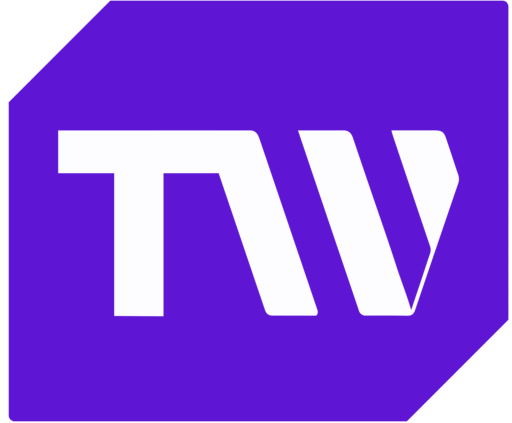Navigating career transition in a unique work environment.
Career transitions are becoming increasingly common in today’s fast-paced workplace and are crucial for professional development and fulfillment. The empowering aspect of these transitions in the new work environment is that people no longer need to wait until retirement to switch up their careers. They can change midway into their niche or entirely venture into a new space.
These career transitions occur for various reasons, like new possibilities or their interest in having a more significant influence. Meanwhile, for whatever reason anyone decides, navigating this path takes careful planning and strategic thinking.
In this article, I’ll share ideas and tactics that will spur you to embrace constant development and reinvention via a Career transition.
Importance of career change strategy.

While managing a career transition might be difficult, there are often chances for improvement. Understanding job transitions and gradually adopting the appropriate strategy is essential to your success, regardless of whether you are pursuing a side project or passion, are unsure of your career path, or are looking for a shift.
It is critical to have a proactive and planned strategy for navigating professional transitions. The process entails developing a robust personal brand, defining transferable abilities (these are skills or experiences that can be applied to different roles or industries), and setting clear goals. It also entails taking chances, being open to new experiences, and having the flexibility to grow and change.
In addition, looking for advice and assistance from industry professionals, career coaches, and mentors is essential. They can offer insightful commentary, practical guidance, and helpful connections to support you with the successful transition. Networking is also a crucial part of the process. By connecting with professionals in your industry of interest or function, you can gain valuable insights, potential job opportunities, and even mentorship. Attend industry events, join professional organizations, and reach out to individuals for informational interviews to expand your network. Remember, your network can be a powerful resource in your career transition journey.
Identifying When it’s time to Change Career.
Recently, there has been a new rave and a seeming demand for individuals to catch up with the new skill set. This improvement has caused career transition to increase more rapidly than you may think.
About 6 out of every 10 (59%) middle-income American workers frequently consider changing careers. Likewise, 44% already have a specific plan to do so. Experts have confirmed that the average person changes occupations three or more times. However, people frequently work in a particular field for years before realizing it could be a better fit for them or having the courage to try something different.
Determining why your current job is not working out is essential to regaining control. Alternatively, it could be the compass for deciding whether changing the industry, function, or both should be the next step. There are some common signs indicating that it is time for a career transition. They include;
- Feeling unfulfilled, bored, or experiencing burnout in your current role.
- Feeling like your work is not making a significant impact on your growth
- Your job negatively affects relationships around you
- Experiencing significant challenges after working at the same place for a long time.
- Your job hurts your self-esteem.
- Your prompt choice to leave the job at any given chance.
These are all signs that it might be time for a change. To determine if it’s time for a new career, utilize the checklist below.
Steps to plan a successful career transition
1. Self-Reflection and Assessment
Before embarking on a career change, it’s crucial to engage in a comprehensive process of self-reflection and assessment. This involves evaluating your skills, weaknesses, beliefs, and interests. Although it may seem daunting, following through the assessment process is a valuable tool to guide and support you in your career transition. Resources like skill inventories, personality tests, and expert coaching can help you through your self-reflection.
2. Research and Market Analysis
When embarking on the career transition journey, it is essential to excuse all assumptions. You must profoundly research the industry you intend to delve into. This includes conducting a thorough market analysis, which involves the possible opportunities to explore, skills to learn, certifications to attain, and individuals to connect with. The moment you properly understand your profile, it’s time to do market research and make possible career choices.
Keep updated about market trends, new technology, and employment requirements in your intended space. Likewise, strategic networking with top experts in your chosen sector will likely give you insightful knowledge. Seek out informational interviews, participate in online forums, and attend industry conferences to learn as much as possible about the field you’re entering. Committing yourself to all these goes a long way in helping you secure the best opportunities.
3. Education and Skill Development

When you have figured out your next career move, you should start taking practical steps to make it happen. Irrespective of your chosen field, there will always be new skills to learn or the need to improve on the previous ones. For instance, if you’re transitioning from digital marketing to cyber-security, you might need to develop skills to thrive in cyber-security. Necessary steps include enrolling in more courses, earning credentials, or receiving training. You can either start with independent learning, which includes
- Listening to industry Podcast
- Watching YouTube videos/ tutorials
- Reading written content such as blogs or articles
- Attending related seminars
Or following a structured learning path which includes;
- Obtaining a paid certification from a traditional college
- One-on-one coaching
- Vocational training
- Monetized seminars
In today’s fast-paced, ever-evolving job market, investing in lifelong learning is not just beneficial, it’s crucial. This emphasis on continuous learning can inspire and motivate you to keep developing your skills and stay relevant in your career transition.
4. Update Your Professional Brand
Having a solid personal brand is often necessary for a successful career change. Beyond one-on-one contact, you should be able to position your brand correctly to stand out from many others.
Necessary factors to put in place include an updated LinkedIn page showing every important prompt of your new career path, a professionally crafted Resume showing your current skill set and point of transition, and any other professional online presence that accurately represents your new career objectives. Emphasize the experiences and abilities that are pertinent to your intended career path. Lastly, create an engaging story highlighting your value to potential employers and conveying your transition story.
5. Networking and Relationship Building
Developing a robust professional network is essential during a career transition. As you begin your new career journey, you must fully immerse yourself in your new industry, make the most of the relationships you already have, and actively seek out new ones in your target sector.
In addition to creating career prospects, networking offers insightful advice and encouragement from seasoned pros who have successfully made comparable adjustments. It can lead to career chances and is a fantastic method of learning about the industry and making contacts. Participating in professional associations, attending networking events, and interacting with industry-related internet groups are intentional practices that can help you make the most of your new career.
Developing Skills for Career Transition.
Moving from one job to another in a career transition entails more than just updating your Resume and making connections in the field you want to work in. Similarly, developing the necessary abilities to shift occupations successfully is essential in today’s labor environment.
Up-skilling has never been more in demand thanks to the recent surge in automation and artificial intelligence and the availability of several free online courses and accessible higher education programs.
Considering the changes in the labor market, most employment now concentrates on your willingness to learn, adapt, and apply for needs that arise. Transferable skills are now required for roles across industries. Unfortunately, job seekers have not yet closed the confidence and knowledge gap on these transferable abilities.
According to research by the national survey of displaced workers, a substantial percentage of respondents, 57% (20.8 million), are unable to confidently identify their transferable skills. Likewise, 58% (21.1 million) of individuals need help including transferable abilities in their resumes. This dent has caused many job seekers to miss out on employment opportunities. How, then, do they know and identify their transferable skills?
Essential Skill for Adapting to New Industry.
Adaptability skills are essential for anyone hoping to navigate their career path. Traits like adapting to a new work environment and processes make you a unique job candidate and give you a competitive edge. Being adaptable also shows you to be highly professional, meaning you’re willing to learn new things, take on new challenges, and generally adjust to changing circumstances. As a recruiter, you can be sure that an adaptable person can keep up with changing priorities, projects, clients, and technology. Top adaptability skills include;
- Critical thinking

Critical thinking is the systematic, analytical process of assessing information, working through issues, and coming to well-informed conclusions. It entails using independent judgment, evidence-based analysis, and logical reasoning to evaluate circumstances objectively.
When adjusting to a new project, setting, or objective, you need to think critically to choose the best course of action. Whether in a work environment or a team bond, critical thinking helps you evaluate the circumstances, consider all possible outcomes, and decide on the best course of action. Essential thinking abilities include Resolving Issues and Making Choices, Creative Thoughts, Successful Interaction, Solving issues, reasoning, and Examination Observation.
- Resilience
Resilience is a vital adaptability skill that significantly impacts the success of both individuals and organizations. It is often defined as overcoming adversity and has several benefits, including increased productivity, improved well-being, and increased organizational adaptability. The main components of resilience include; flexibility, self-confidence, determination, diligence, emotional regulation, adaptive thinking, problem-solving amplitude, and open-mindedness.
- Collaboration/Teamwork

Regardless of your job title or industry, strong teamwork abilities are essential for success in the workplace. In meetings, conversations, and other collaborative settings, working and coordinating well with your supervisors, clients, and coworkers can help you accomplish things uniquely while fostering a positive environment for everyone involved.
Collaboration can also involve adapting to different classes of individual personalities while maintaining professional work dynamics. Your coworkers may have a variety of backgrounds, experiences, and skill sets. Working with a varied team and handling conflict, divergent opinions, and other dynamics that may arise enhances your ability to adapt in a team setting. Other fundamental abilities to foster teamwork include cooperation, leadership,
- Problem-solving Skills.
Organizational skills show off your capacity to concentrate on various tasks and effectively and efficiently use your strength, time, and energy to get the intended result. Maintaining an organized workspace, including digital files, paperwork, and other aspects of your work, can help you be better prepared if operational changes occur at work. Other illustrations of organizational skills: Making Decisions and Managing Projects, Innovative Problem-Solving
Reskilling for professionals.
Reskilling is essential for any professional willing to explore new roles or opportunities. Often, reskilling occurs when companies decide to support their employees in developing a new skill. Undoubtedly, every organization that prioritizes the continual growth of its employees engages in reskilling. The essence of reskilling is to equip employees to improve their proficiency in their current position or move into an advanced position.
Preferably, reskilling should occur within the same organization and not be mistaken for retraining. Reskilling only sometimes involves a worker moving from one department to another. It often involves giving workers more training to enhance their output in their existing roles. Additionally, reskilling creates advancement prospects.
Career Pivot advice.

Individuals can lose interest or experience burnout as they progress along the professional arc. Many find themselves in a position or industry that no longer fits their objectives or interests. However, it is essential to note that there is no monopoly on how things work regarding changing careers. A career change could result from external circumstances, organizational changes, changes in one’s personal life, high levels of occupational stress, the ongoing instability of the economy, the prevalence of professional burnout, or the decision to shift grounds generally.
Furthermore, advancements like artificial intelligence are reshaping the work market and raising many concerns about the future. If you’ve been feeling stressed, dissatisfied, or concerned about the stability of your employment in the future, it could be time for you to change careers. Before making any decision, consider these pointers for reinventing yourself in your professional and personal life, regardless of whether you’ve already started a new career or are considering moving.
Tips for making a successful career Pivot
- Reflect on your Strengths and interests.
The first step in any career pivot is to take stock of your current skills, strengths, and interests. Ask yourself questions like:
- What are you good at?
- What do you enjoy doing?
- What are your values and priorities?
- What are the kinds of tasks and activities that energize you and the things that drain you?
Ensure you give yourself fair answers. By carefully engaging in this self-reflection, you can identify potential paths that fit your strengths and interests well. When assessing your strengths, it is essential to highlight your transferable skills. Doing this gives you an edge with recruiters when you consider a career overhaul rather than starting from the bottom to master new skills.
Recruiters typically consider only resumes containing at least 50% of the skill requirements for any job posting. If you are having trouble identifying your strengths or even your transferable skills, consider asking a friend, former colleague, or former manager with whom you have a positive relationship to offer feedback or review what they would consider your strengths. Reflecting on where you’ve added value in the past and accessing your skills is a great way to jumpstart planning for the future.
2. Position yourself as a problem solver.
Stress your capacity for problem-solving. Possessing transferable talents makes you a great asset in any business or function, as they often significantly address difficulties or spur innovation. To effectively position oneself as a problem solver, one must first grasp the business, organization, or team one is a part of. This factor calls for identifying shared problems, inefficiencies, or prospective areas for development and carefully listening to stakeholders, clients, and coworkers to understand their worries.
Examine workflows, procedures, or systems to find areas that could use innovation or optimization.
Asking the correct questions is integral to being attentive and simply listening intently. This act indicates you want to learn about the nature and extent of the problem before making recommendations for improvement.
3. Research potential new careers
Look for industries or job roles that align with your interests and skills. Staying ahead in a fast-evolving job market demands prompt learning and upskilling. Point out that necessary skills are in high demand within your new career sector, and invest time in acquiring and gaining them.
Getting familiar with online courses, certifications, workshops, or networking events can sharpen your skill set and broaden your horizon. Learn more about job requirements, salary expectations, and role expectations using online resources like LinkedIn, Glassdoor, and other industry-specific websites. Look out for new technologies and trends to stay ahead in your new career path. You can also reach out to people in your network who work in those fields to get a better sense of what it’s really like
4. Network

If you want to succeed in rebranding yourself, you must step out of your comfort zone. Maximize your existing network, such as your friends and former co-professionals, by informing them of your career pivot if they haven’t heard about your professional rebrand yet. Feel free to ask them for help. Tweak your social profile to show your new career interest. Advisably, connect with industry thought leaders on social media by sending out connection invites. Your new connections are likely to come in handy when you need internship or volunteering opportunities that give you an edge over your competitors.
5. Take the leap
Once you’ve reflected on your skills, interests, and non-negotiable, researched, and built a network, it’s time to jump. Advisably, you can inform your connections about the type of jobs or opportunities that you are open to. If you have invested your effort in connecting with the necessary people in your new career space, especially industry experts, applying for a job will be much easier. Chances are that you will have the upper hand than your competitors because you are leveraging their expertise and experience.
Bear in mind that making a career change comes with a lot of challenges, but it can also be incredibly exciting and, most importantly, rewarding. Keep your end goal in mind and stay positive as you navigate the transition. You may need to adjust to a new environment, learn a new place, and build new relationships, but with time, effort, and dedication, you can and will succeed in your new career venture.
Conclusion
Finally, career changes have become the norm in today’s competitive employment market. To successfully manage these changes, every professional should practice self-reflection, upskilling, networking, and personal branding.
In addition, looking for mentors and coaches and practicing tenacity and consistency will give them an edge. By implementing these methods, people can improve their chances of making a seamless and fruitful career move. Every professional, regardless of their level, can develop a proactive and adaptive mentality to build the path for a prosperous and fulfilling future and confidently navigate professional transitions.


